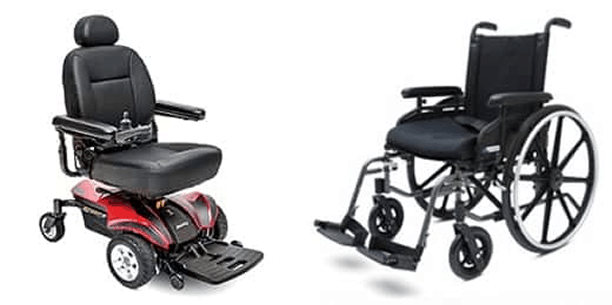If you rely on mobility aids or devices for accessibility and everyday living, there may come a time when you ponder the following question: Should you replace or repair your mobility equipment? There are many situations and times that merit consideration of new, updated aids, but there may also be times when a repair or malfunction is a simple fix. The key to knowing when the time has come to replace your current devices involves a little research and some careful thought.
One of the questions that many consumers have related to mobility aids concerns when it is time to replace or upgrade their current wheelchair, scooter, or mobility device. Depending on what you use, the condition of the device, and the amount of wear and tear, it may be more prudent to have the product repaired or serviced. Carefully weigh your options and decide whether it makes more sense to invest in your current mobility device or whether it seems prudent to start fresh, with something new.
There are some things to consider when contemplating this question: Should you replace or repair your mobility equipment?
The Lifespan of your Mobility Aids
One of the fundamental reasons why it is time to replace your current mobility equipment has to do with the age of the device; how old is your mobility aid? Given the age, does it make sense to put time, effort, and money into repairing it? A wheelchair typically lasts approximately three to five years, when maintained properly. With quality equipment and regular service and technical support, your chair may last much longer; ask your mobility retailer for tips to sustain and extend the life of your devices.
Issues with Battery Life
Battery life issues are among the most common problems plaguing individuals that use mobility devices. If one of your wheelchair’s batteries fails, replace both of the batteries to ensure optimal performance. Plus, this is typically a precursor to the second battery’s failure, as well. Always replace and buy the same type of battery that you previously used; if you are unsure what this is, talk to your mobility vendor that sold you the device.
It may cost up to a couple of hundred dollars to replace the battery in a scooter but if you question how good your battery is before leaving on a trip, it makes sense to go ahead and replace it. Most scooters use two 12-volt batteries, or 24 voltage, to operate. Even if you don’t use your scooter often, make sure to keep the battery charged to prevent it from drying up and failing to hold a charge. This leads to a significantly shorter life- not what you want when heading out of town! Know that it is a delicate balance however as if you over-charge your scooter’s battery, the device won’t work either.
Updates That Make Sense
The time to replace your wheelchair should be when you want to improve convenience, access, portability, ease, or freedom. Consider the convenience and accessibility of newer options like folding electric transport-style wheelchairs instead of your old manual chair- the choice is up to you!
Troubleshooting Repairs
When you are struggling with issues that are affecting your scooters or wheelchair, refer to the manual. Keep a hard copy of the owner’s manual for when you go on vacation; at the very least, have it downloaded on your phone or computer before. Usually, any malfunction will come with an indicator light or error code; refer to your manual to identify what the error code means and how to resolve the issue. The first line of defense- and the first thing you should do- when your equipment fails is to resort to reading the owner’s manual. It is essential and effective when trying to distinguish between issues that warrant repairs or problems that will merit replacement.
Your Own Research
It bears repeating, read the owner’s manual that you got with your device- or that you can easily download from the internet. The manufacturer will provide lots of valuable information that can help in a pinch. While you are online, do some research yourself into common issues associated with the specific device that you use or own; this may tease-out what you should be watching for and how to prepare for malfunction. If your scooter won’t start, begin with the very basics: is the scooter in the right position for it to operate? Human error often is the reason why your device won’t work!
Ready to upgrade your current mobility equipment? Perhaps you need some basic repairs or service? Talk to the professionals at Pacific Mobility to learn more. Their team of dedicated technicians is waiting to answer your questions and make sure you have the right device or equipment for your distinct needs. Visit us today.
President, Husband, Father, Grandfather Graduate of UC Davis- Bio Sci Major- Go Aggies! Jeff has extensive experience in all of Pacific Mobility’s products and services, and specializes in accessibility products as well as stairlifts, ceiling lifts and custom wheel chairs. His hobbies include spending time with family, gardening, mountain biking, exercising and off road motorcycle riding.
24 years as Owner/President of Pacific Mobility Center – selling, installing, and servicing stairlifts, porch lifts, ceiling lifts, pool lifts, handicap ramping, specialty wheelchairs, scooters, power wheel chairs, and other power mobility devices
Certified Environmental Access Consultant since 2008
Licensed General Contractor since 1998
Certified Aging in Place Specialist since 2016
Board Member for Home Access Professionals
Member of Association of Members of the Accessibility Equipment Industry (AEMA)




